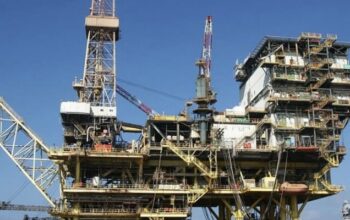The country’s oil production reached a total volume of 29.561 million barrels (MMBBLS) in the month of March, an average of 0.954 million barrels per day (MBPD), representing a decline of 0.7 percent compared to the month of February, which was recorded and a production of 29,781 MMBBLS.
According to the monthly report, published by the national consulting company for oil, gas and renewable energies, PetroAngola, throughout the month of March, the Dália field, located in Block 17, registered a drop in production of around 110 daily oil production ( KBPD) due to a maintenance program carried out in that field.
Despite this, indicates the source, Block 17 with an average of 242,327 KBPD was positioned as the largest producer in the period under analysis, followed by Block 0 with an average production of 146,429 KBPD, and in 3rd place was Block 32 with a production of 136,349 KBPD.
As for natural gas production, 44 percent of the total volume was injected, 7 percent was made available for energy generation at the oil installations, 18 percent was exported to the ALNG plant, 3 for burning and the remaining 28 were used in LIFT gas operations.
Angolan Branches
The company PetroAngola indicates in its report that Cabinda was the highest valued Angolan raw material, having reached the highest price of US$86.78/BBL (per barrel) and a monthly average of US$79.53/BBL.
The Girassol vine took 2nd place with a monthly average of 79.44/BBL and the highest price of 86.53/BBL, the Nemba vine, in turn, was the 3rd best valued obtaining a monthly average of 77.49/BBL and the lowest price high of 84.63/BBL, and lastly follows the Dália branch, which reached the highest price of 84.63/BBL. ending the month with an average price of 76.81/BBL.
“In March, Angolan grades were traded at a discount in relation to Brent (a benchmark for exports from Angola), since the combination of the prices of the most valued grades in international markets reached an average value of 78.32/BBL, with trading at 0.87/BBL below Brent”, reveals the company’s report.
oil prices
In March, oil barrel prices had a negative performance in international markets.
The source indicates that Brent, the benchmark for Angolan raw materials, was traded at an average of 79.19/BBL, a decrease of 4.19/BBL in relation to the monthly average of February, when an average price of 83.38/BBL was recorded.
During the period under review, Brent traded at the highest price of 86.18/BBL, having reached a monthly average of 79.19/BBL, while WTI (the benchmark oil in the United States of America), reached the highest price of 80.46/BBL and a monthly average of 73.30/BBL.
The Brent/WTI spread for the month of March stood at 5.89/BBL, a reduction of 0.77/BBL compared to the previous month, justified by lower demand for Brent oil in global markets.
“The market is structurally in Contango, with spot sales being traded below future sales”, he points out, with dated Brent traded at 0.82/BBL below the value of future deliveries.
The report highlights that the current structure of the market continues to reflect the reduced risk of a global economic slowdown, supported by the optimistic perspectives on the demand for oil, considering the improvement of the economic scenario in China and the USA, the reduction of the inflation rate and the easing of the Federal Reserve’s monetary policies. Meanwhile, the market continues to experience tighter oil supplies.
![]()




